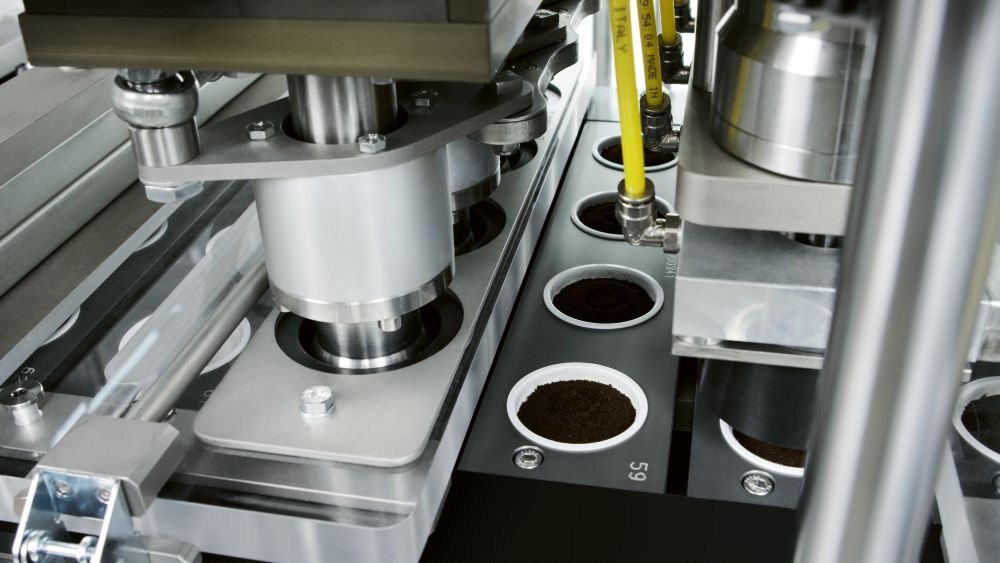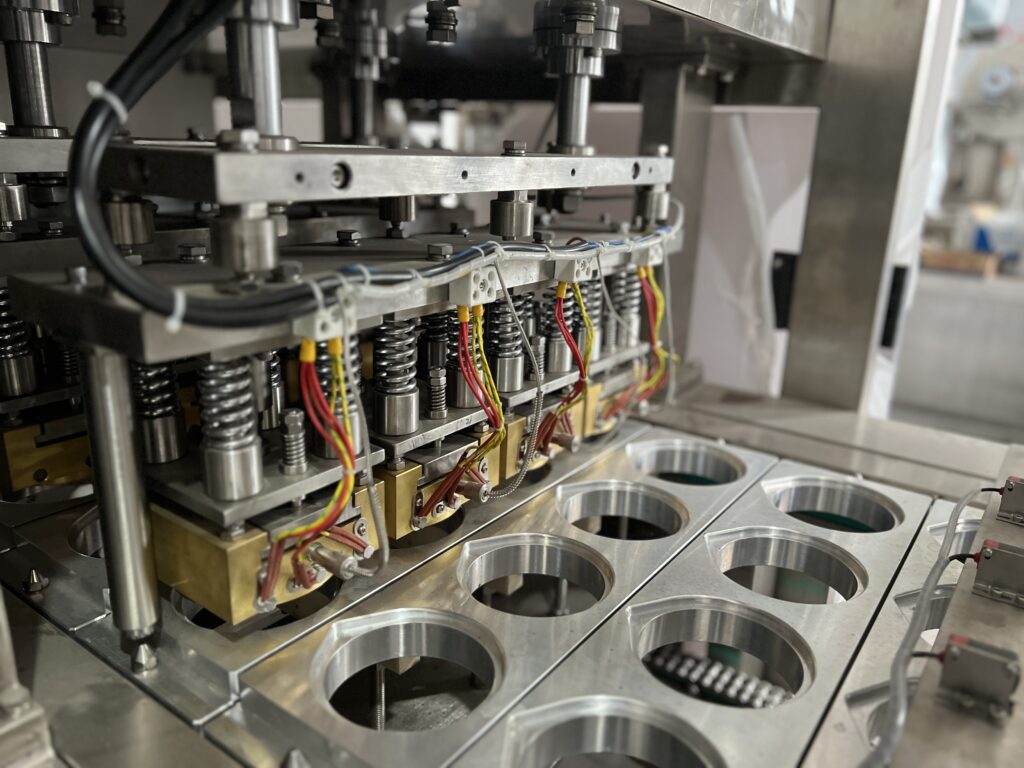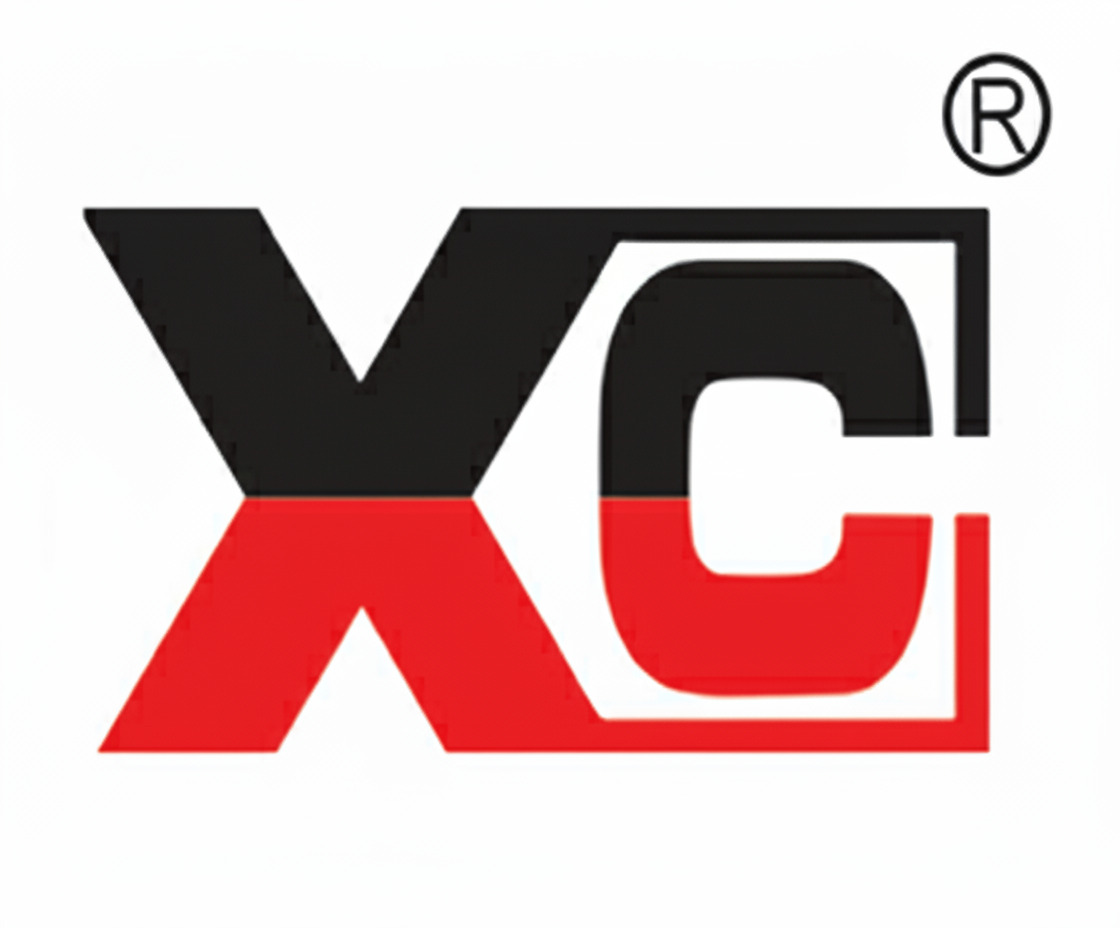How Are Coffee Capsules Manufactured?
Want to tap into the booming coffee capsule market? The production process can seem intimidating. But it is a surprisingly simple, automated process with the right machine.
Coffee capsules are made using an automated filling and sealing machine. The process involves dropping empty capsules, filling them with coffee powder, placing a sealing film on top, and heat-sealing it shut. This entire sequence is fully automated for speed and consistency.

Now you know the basic steps. But how does each part of this automated line actually work? Let’s break down the journey of a single coffee capsule, from an empty cup to a perfectly sealed product ready for your customers. It is a fascinating look at modern food production technology.
How Does the Automated Process Begin with Cups and Coffee?
Getting the right amount of coffee in each capsule is critical. Doing it by hand is slow and wastes product. Automation solves this with precise cup dropping and filling systems.
The process starts with an automatic cup dropping mechanism1 that places empty capsules into the machine’s conveyor. Then, a highly precise screw filling system2, also known as an auger filler3, dispenses the exact amount of coffee powder into each capsule, ensuring total consistency.
 ![Commercial dough divider machine in operation]
![Commercial dough divider machine in operation]
Let’s look closer at these first two critical stages. The success of the entire production line starts right here. Getting these steps right ensures efficiency and a high-quality final product.
The Importance of Automatic Cup Dropping
The first action the machine takes is dropping an empty cup. This might sound simple, but it is a point of precision engineering. The machine holds stacks of empty capsules. A mechanism then separates a single cup from the bottom of the stack and places it perfectly into a mold on the conveyor belt. This has to be perfect. If the cup is not aligned, the filling and sealing stages will fail. We customize this part of the machine for every client. They send us their cup samples, and we build the dropping mechanism to match their exact dimensions. This ensures a smooth, jam-free operation from the very start.
Precision Filling with a Screw System
Once the cup is in place, it moves to the filling station. For coffee powder, we use a screw filling system. This is also called an auger filler. An auger is a rotating screw. As it turns, it moves a very precise amount of coffee powder down a funnel and into the cup below. The amount of rotation is controlled by a servo motor, which means the dose is extremely accurate every single time. I remember a client who struggled with inconsistent coffee strength from their old machine. After we installed a new line with a servo-driven screw filler, their quality problems disappeared.
| Feature | Screw Filling (Auger) | Volumetric Cup Filling |
|---|---|---|
| Precision | Very High (Control by weight) | Moderate (Control by volume) |
| Best For | Powders, Fine Granules | Free-flowing Granules, Liquids |
| Cost | Higher | Lower |
| Flexibility | High (easy to adjust dose) | Lower (fixed cup size) |
What Happens After the Coffee is Inside the Capsule?
Filling the capsule is only half the job. A poor seal means stale coffee and unhappy customers. The machine’s final automated stages create a perfect, airtight seal every single time.
After filling, the machine automatically places a pre-cut aluminum film over the top of the capsule. A heated sealing head then presses down, bonding the film to the cup’s rim. This creates an airtight seal that preserves the coffee’s aroma and freshness.

The seal is the guardian of freshness. It is the most critical part for ensuring the customer enjoys the coffee as intended. Let’s explore how the machine achieves a perfect seal on thousands of capsules per hour.
Automatic Film Placement
With the capsule filled, it is time to put a lid on it. Our machines can do this in two ways. The first way uses pre-cut lids. The machine picks up a single lid from a stack and places it accurately on the capsule. The second way uses a roll of film. The machine pulls the film over the row of capsules, seals it, and then cuts the individual lids. This is called roll-stock film with die-cutting. We often recommend roll-stock film to our clients in developing countries. It can be more cost-effective and easier to source than ordering millions of pre-cut lids. We design the machine based on the client’s needs and their local supply chain.
The Science of a Perfect Heat Seal
Creating that strong, peelable seal depends on three things: Temperature, Pressure, and Time. We call this the sealing window1. The heated sealing head must be at the correct temperature to activate the sealing layer on the film without burning it. It must apply the right amount of pressure to ensure the film makes complete contact with the cup rim. And it must hold for the right amount of time to allow a strong bond to form. I’ve seen a client’s facility where their old machine had inconsistent seals. It was a huge source of customer complaints. Getting these three parameters perfect is our job. It turns a good product into a great one.
| Parameter | What It Does | Common Issues if Incorrect |
|---|---|---|
| Temperature | Melts the sealing layer on the film/cup | Too low: weak seal. Too high: burnt film. |
| Pressure | Ensures full contact between film and cup | Too low: gaps, leaks. Too high: damages cup. |
| Time (Dwell) | Allows heat to transfer and bond materials | Too short: incomplete seal. Too long: melts cup. |
Why is a Fully Automated Machine the Best Choice for Production?
Thinking about starting production? Manual work is slow and inconsistent, leading to wasted product and money. Full automation is the only way to achieve the speed and quality needed to compete.
A fully automated machine is best because it guarantees high speed, consistent quality, and improved hygiene. It reduces labor costs, minimizes material waste, and allows you to scale production easily to meet market demand. This provides a much faster return on your investment.
Choosing between semi-automatic and fully automatic is a big decision for our clients. While the initial investment is higher for full automation, the long-term benefits are impossible to ignore. Let’s look at why it’s the smarter choice.
Speed and Scalability
Many of our clients work the same way. They go to a supermarket, see a popular product like a coffee capsule, and decide to make their own. To compete, they need to produce large volumes to get their product onto those same store shelves. A fully automated machine is built for this. It can produce thousands, or even tens of thousands, of capsules per hour. This speed allows a new business to meet large orders and scale up production as their brand grows. A semi-automatic machine simply cannot keep up with this kind of demand.
Unmatched Consistency and Quality
Automation removes human error. Every capsule is dropped, filled, and sealed in exactly the same way. The coffee dose is precise. The seal is perfect. This consistency builds brand trust with consumers. It also improves hygiene. The entire process is enclosed within the machine, which reduces the risk of contamination. I have visited many factories. A floor with a fully automated line is clean, quiet, and efficient, often with just one person overseeing the machine. It is a world of difference from a crowded, noisy floor with multiple people working on semi-automatic equipment. The quality control is built directly into the automated process.
| Factor | Semi-Automatic | Fully-Automatic |
|---|---|---|
| Labor Required | High (multiple operators) | Low (one supervisor) |
| Speed (Capsules/hr) | Lower (e.g., 500-1,500) | High (e.g., 2,000-70,000+) |
| Consistency | Varies with operator skill | Extremely High |
| Initial Cost | Lower | Higher |
| Long-Term ROI | Good | Excellent |
Conclusion
Making coffee capsules is a simple, four-step automated process. With the right filling and sealing machine, you can achieve high-speed, high-quality production and successfully enter this profitable market.
-
Explore this link to understand how automatic cup dropping mechanisms enhance efficiency in coffee capsule production. ↩ ↩
-
Learn about screw filling systems and their role in ensuring precision and consistency in coffee capsule filling. ↩
-
Discover the importance of auger fillers in coffee production and how they contribute to product quality. ↩


